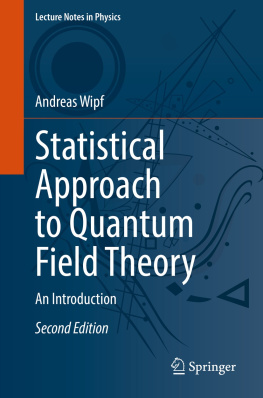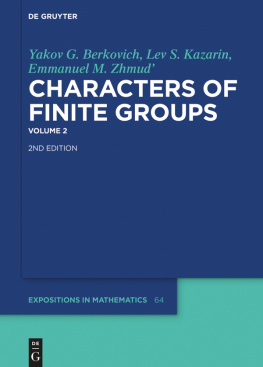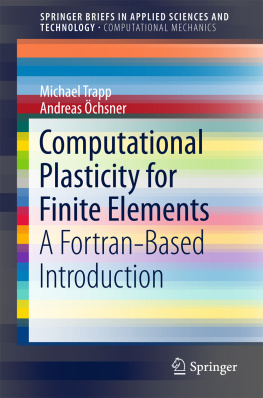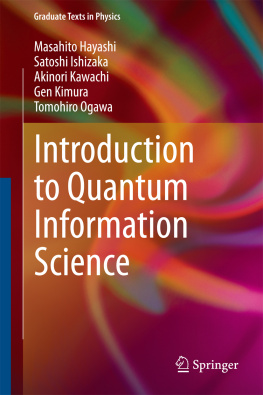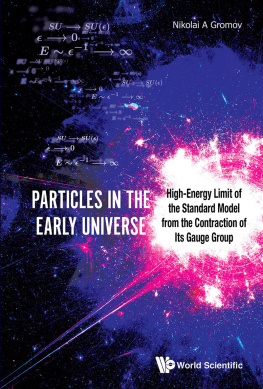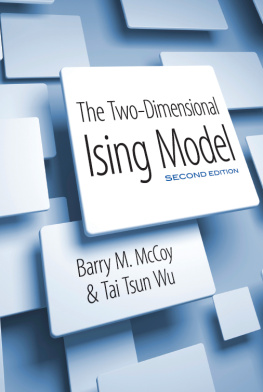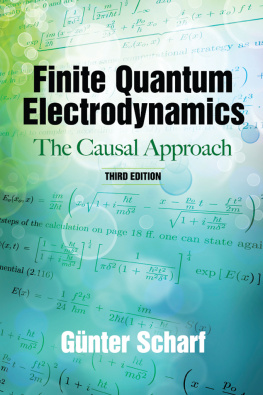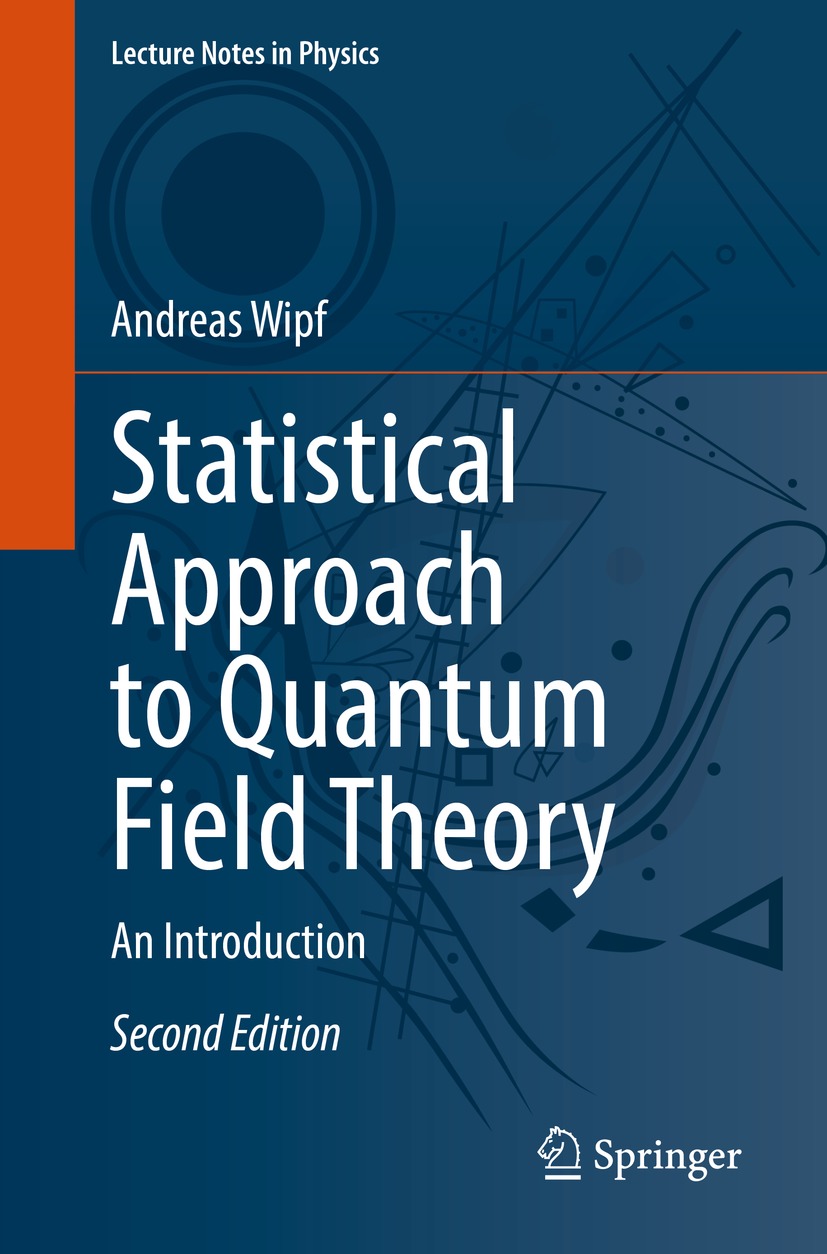Volume 992
Lecture Notes in Physics
Series Editors
Roberta Citro
Salerno, Italy
Peter Hnggi
Augsburg, Germany
Morten Hjorth-Jensen
Oslo, Norway
Maciej Lewenstein
Barcelona, Spain
Angel Rubio
Hamburg, Germany
Wolfgang Schleich
Ulm, Germany
Stefan Theisen
Potsdam, Germany
James D. Wells
Ann Arbor, MI, USA
Gary P. Zank
Huntsville, AL, USA
Founding Editors
Wolf Beiglbck
Heidelberg, Germany
Jrgen Ehlers
Potsdam, Germany
Klaus Hepp
Zrich, Switzerland
Hans-Arwed Weidenmller
Heidelberg, Germany
The Lecture Notes in Physics
The series Lecture Notes in Physics (LNP), founded in 1969, reports new developments in physics research and teaching - quickly and informally, but with a high quality and the explicit aim to summarize and communicate current knowledge in an accessible way. Books published in this series are conceived as bridging material between advanced graduate textbooks and the forefront of research and to serve three purposes:
to be a compact and modern up-to-date source of reference on a well-defined topic;
to serve as an accessible introduction to the field to postgraduate students and non-specialist researchers from related areas;
to be a source of advanced teaching material for specialized seminars, courses and schools.
Both monographs and multi-author volumes will be considered for publication. Edited volumes should however consist of a very limited number of contributions only. Proceedings will not be considered for LNP.
Volumes published in LNP are disseminated both in print and in electronic formats, the electronic archive being available at springerlink.com. The series content is indexed, abstracted and referenced by many abstracting and information services, bibliographic networks, subscription agencies, library networks, and consortia.
Proposals should be sent to a member of the Editorial Board, or directly to the responsible editor at Springer:
Dr Lisa Scalone
Springer Nature
Physics
Tiergartenstrasse 17
69121 Heidelberg, Germany
lisa.scalone@springernature.com
More information about this series at http://www.springer.com/series/5304
Andreas Wipf
Statistical Approach to Quantum Field Theory
An Introduction
2nd ed. 2021

Logo of the publisher
Andreas Wipf
Theoretical Physics, Friedrich Schiller University Jena, Jena, Germany
ISSN 0075-8450 e-ISSN 1616-6361
Lecture Notes in Physics
ISBN 978-3-030-83262-9 e-ISBN 978-3-030-83263-6
https://doi.org/10.1007/978-3-030-83263-6
The Editor(s) (if applicable) and The Author(s), under exclusive license to Springer Nature Switzerland AG 2013, 2021
This work is subject to copyright. All rights are solely and exclusively licensed by the Publisher, whether the whole or part of the material is concerned, specifically the rights of translation, reprinting, reuse of illustrations, recitation, broadcasting, reproduction on microfilms or in any other physical way, and transmission or information storage and retrieval, electronic adaptation, computer software, or by similar or dissimilar methodology now known or hereafter developed.
The use of general descriptive names, registered names, trademarks, service marks, etc. in this publication does not imply, even in the absence of a specific statement, that such names are exempt from the relevant protective laws and regulations and therefore free for general use.
The publisher, the authors and the editors are safe to assume that the advice and information in this book are believed to be true and accurate at the date of publication. Neither the publisher nor the authors or the editors give a warranty, expressed or implied, with respect to the material contained herein or for any errors or omissions that may have been made. The publisher remains neutral with regard to jurisdictional claims in published maps and institutional affiliations.
This Springer imprint is published by the registered company Springer Nature Switzerland AG
The registered company address is: Gewerbestrasse 11, 6330 Cham, Switzerland
To Ingrid, Leonie, Severin, and Valentin
Preface to the Second Edition
This new expanded second edition has been totally revised and corrected. The reader finds two completely new chapters. One covers the exact solution of the finite temperature Schwinger model with periodic boundary conditions. This simple model supports instanton solutionssimilarly as QCDand allows for a detailed discussion of topological sectors in gauge theories, the anomaly-induced breaking of chiral symmetry, and the intriguing role of fermionic zero modes. The other new chapter is devoted to interacting fermions at finite fermion density and finite temperature. Such low-dimensional models are used to describe long-energy properties of Dirac-type materials in condensed matter physics. The large-N solutions of the Gross-Neveu, Nambu-Jona-Lasinio, and Thirring models are presented in great detail, where N denotes the number of fermion flavors. Towards the end of the book, corrections to the large-N solution and simulation results of a finite number of fermion flavors are presented. Further problems are added at the end of each chapter in order to guide the reader to a deeper understanding of the presented topics. This book is aimed at advanced students and young researchers who want to acquire the necessary tools and experience to produce research results in the statistical approach to quantum field theory.
It is a great pleasure to thank again the many collaborators, teachers, and colleagues already mentioned in the first edition of this book. In addition, I would like to thank the group in Frankfurt (Laurin Pannullo, Marc Wagner, and Marc Winstel) and my more recent PhD students and postdocs for a fruitful collaboration on interacting Fermi systems in the continuum and on the lattice. Several new sections in this second edition are based on an early collaboration with I. Sachs and an ongoing collaboration with the group in Frankfurt and with J. Lenz, M. Mandl, D. Schmidt, and B. Wellegehausen. I would like to thank Holger Gies and Felix Karbstein for many inspiring discussions about interacting Fermions, and Julian Lenz, Michael Mandl, and Ingrid Wipf for proofreading the new chapters.
Andreas Wipf
Jena, Germany
June 2021
Preface to the First Edition
Statistical field theory deals with the behavior of classical or quantum systems consisting of an enormous number of degrees of freedom in and out of equilibrium. Quantum field theory provides a theoretical framework for constructing quantum mechanical models of systems with an infinite number of degrees of freedom. It is the natural language of particle physics and condensed matter physics. In the past decades the powerful methods in statistical physics and Euclidean quantum field theory have come closer and closer, with common tools based on the use of path integrals. The interpretation of Euclidean field theories as particular systems of statistical physics opened up new avenues to understand strongly coupled quantum systems or quantum field theories at zero or finite temperature. The powerful methods of statistical physics and stochastics can be applied to study for example the vacuum sector, effective action, thermodynamic potentials, correlation functions, finite size effects, nature of phase transitions or critical behavior of quantum systems.

